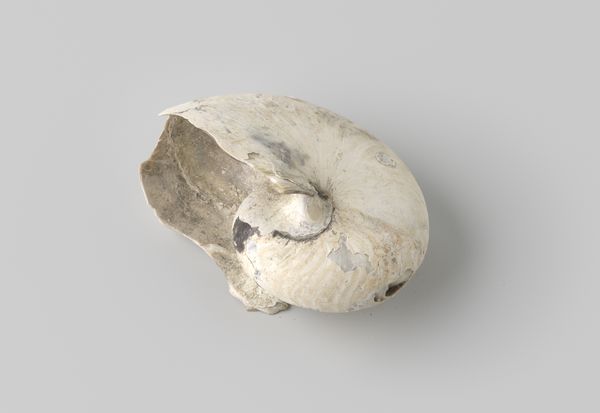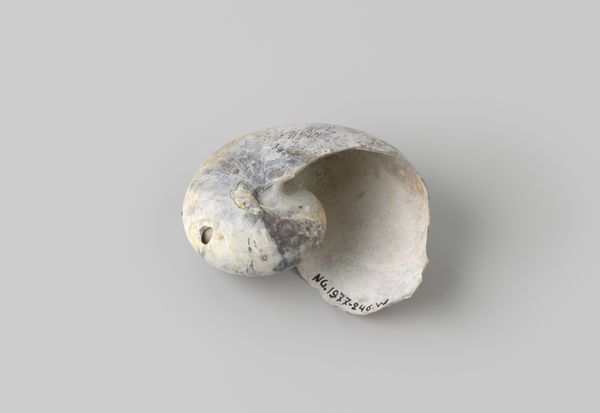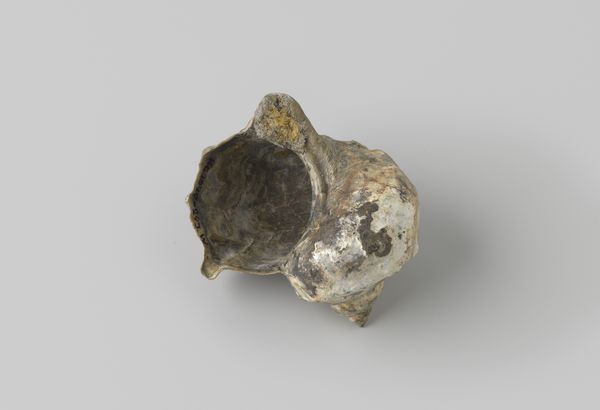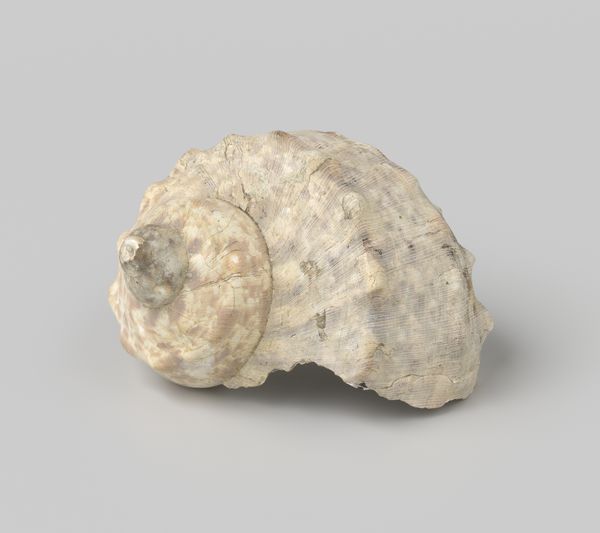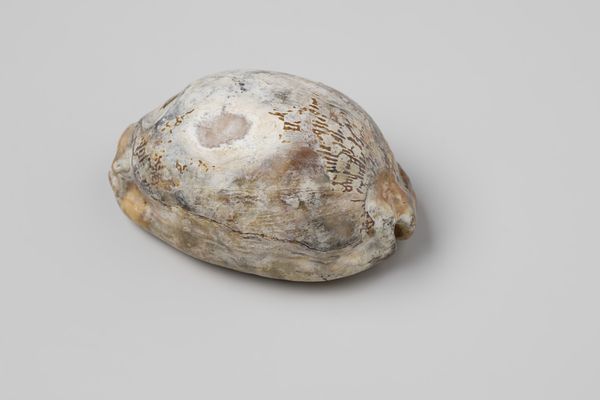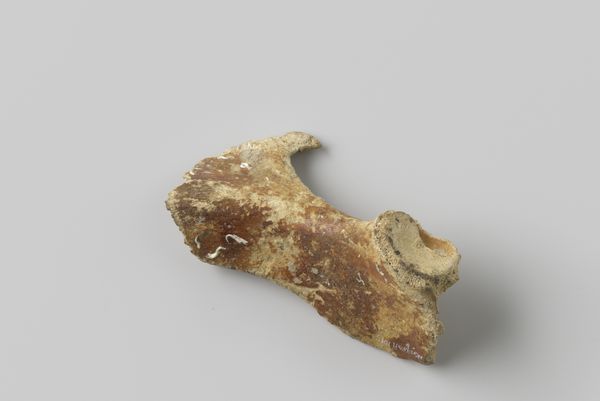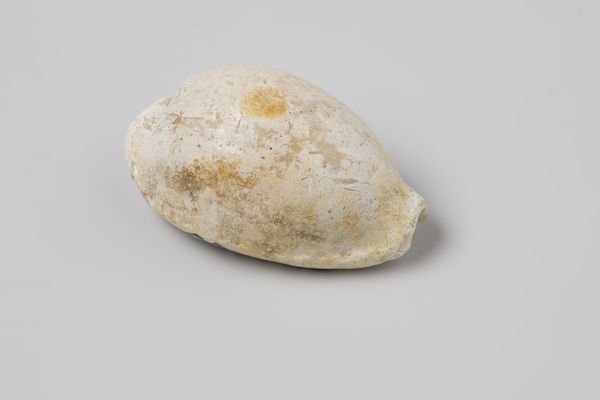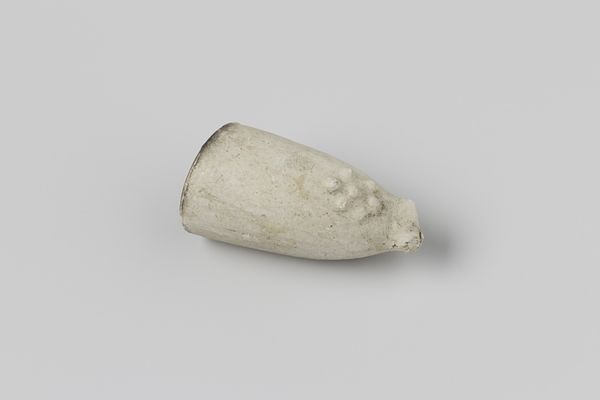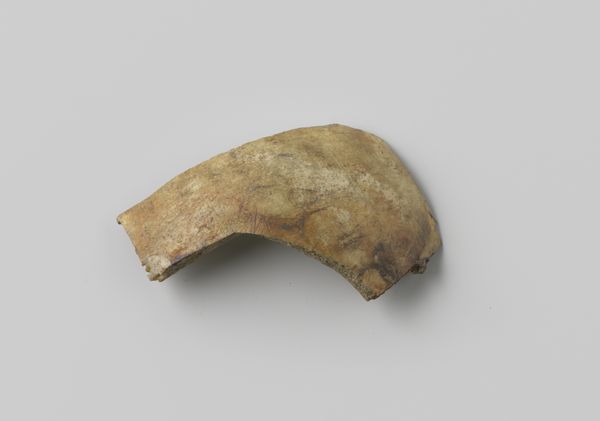
Nautilus pompilius shell from the wreck of the Dutch East India ship Witte Leeuw before 1613
0:00
0:00
nietvantoepassing
Rijksmuseum
found-object, sculpture
#
baroque
#
found-object
#
stoneware
#
sculpture
#
ceramic
Dimensions: height 6.2 cm, width 11.2 cm, depth 8.5 cm
Copyright: Rijks Museum: Open Domain
Curator: Looking at this nautilus pompilius shell, recovered from the wreck of the Witte Leeuw, a Dutch East India ship that sank before 1613, what strikes you? Editor: An eerie calm. It's almost as if the ocean's secrets are whispering from the curves. I'm fascinated by the damage it's weathered, the stories held within each imperfection. Curator: Indeed. Beyond its aesthetic appeal, consider the social context of its creation. The Dutch East India Company used items like this for trade. The labor of obtaining these shells and the circumstances of its loss due to shipwreck highlights colonial economic activity. Editor: I get the history lesson, but to me, it feels deeply personal, more a reflection on mortality than capital. Holding it, one could imagine entire worlds inside its spiral – each chamber, a forgotten memory. A sunken echo of an old ambition. Curator: It's interesting you frame it that way. While the shell embodies natural artistry, the wreck also raises questions of Dutch maritime trade networks and the risks workers faced procuring luxury items like this for the market. Its value transcended mere decoration. Editor: Absolutely, but beauty transcends economics, don't you think? Despite the tragic loss, or maybe because of it, the shell has morphed into something more. Its rough, aged texture provides a profound textural narrative about resilience and time. Curator: Agreed. Perhaps examining this particular nautilus transcends strict categorization. It bridges art and artefact; found object and sculpture. Ultimately its cultural biography helps illuminate early trade in luxury commodities. Editor: So, both a relic and a messenger. I love that. Looking at it again now, knowing that… it feels like the ocean's own poignant poem.
Comments
No comments
Be the first to comment and join the conversation on the ultimate creative platform.
